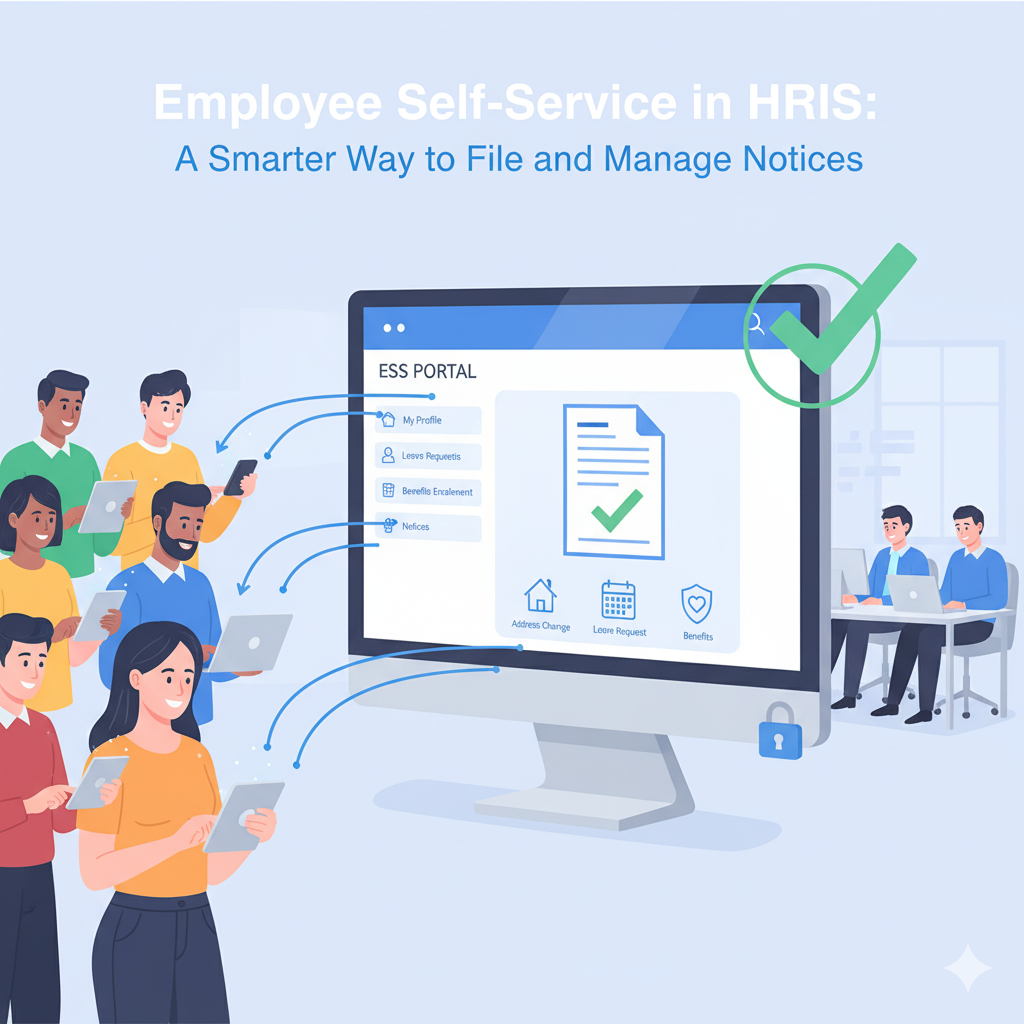Address
Kaypian, San Jose Del Monte City, Bulacan Philippines
Work Hours
Monday to Friday: 8AM - 6PM
Weekend: 10AM - 5PM
Address
Kaypian, San Jose Del Monte City, Bulacan Philippines
Work Hours
Monday to Friday: 8AM - 6PM
Weekend: 10AM - 5PM


Integrated HR. Accurate Payroll.


Integrated HR. Accurate Payroll.

In today’s digital workplace, efficiency and accessibility are essential to effective HR management. Employees expect quick, transparent ways to handle routine HR transactions—like filing leave requests, overtime notices, or schedule changes—without lengthy approval chains or piles of paperwork.
This is where Employee Self-Service (ESS) in HRIS makes all the difference. By integrating self-service tools into the Human Resource Information System (HRIS), companies can empower employees to take control of their HR needs—saving time, improving accuracy, and promoting accountability.
Employee Self-Service is a feature within an HR Information System (HRIS) that allows employees to access, manage, and update their own HR information. Instead of relying on HR personnel for every transaction, staff can independently:
This digital transformation makes HR operations more efficient and reduces manual tasks for HR teams.
Traditionally, filing notices meant completing paper forms or sending emails, waiting for approval, and following up with HR. With HRIS self-service, this entire process becomes digital and automated.
Here’s how it typically works:
This process ensures transparency, reduces errors, and provides an audit trail for compliance and reporting.
✅ 1. Faster and More Efficient Processes
Employees can file notices anytime, anywhere—no waiting for HR office hours or manual processing.
💡 2. Less Administrative Work for HR Teams
Automating the filing and approval process allows HR staff to focus on strategic initiatives rather than repetitive data entry.
🔒 3. Enhanced Accuracy and Data Security
Digital forms reduce human error and ensure that employee data is securely stored and easily retrievable.
📊 4. Improved Transparency and Accountability
Employees can track the status of their notices and approvals in real time, reducing follow-up emails and confusion.
🌐 5. Better Employee Experience
Self-service fosters trust and empowerment, allowing employees to manage their HR-related tasks conveniently through a user-friendly interface.
To maximize the benefits of Employee Self-Service in HRIS, consider these best practices:
The rise of digital HR management is more than a trend—it’s a necessity. Businesses adopting HRIS with self-service features are experiencing:
By implementing a self-service model, companies not only streamline their internal processes but also demonstrate a commitment to transparency and empowerment.
In the modern workplace, Employee Self-Service in HRIS is no longer optional—it’s a strategic advantage. By allowing employees to file and manage their own notices digitally, organizations save time, cut down on paperwork, and enhance employee satisfaction.
Ultimately, it’s about creating a smarter, more efficient, and employee-centered HR environment—one that benefits everyone from HR professionals to frontline staff.